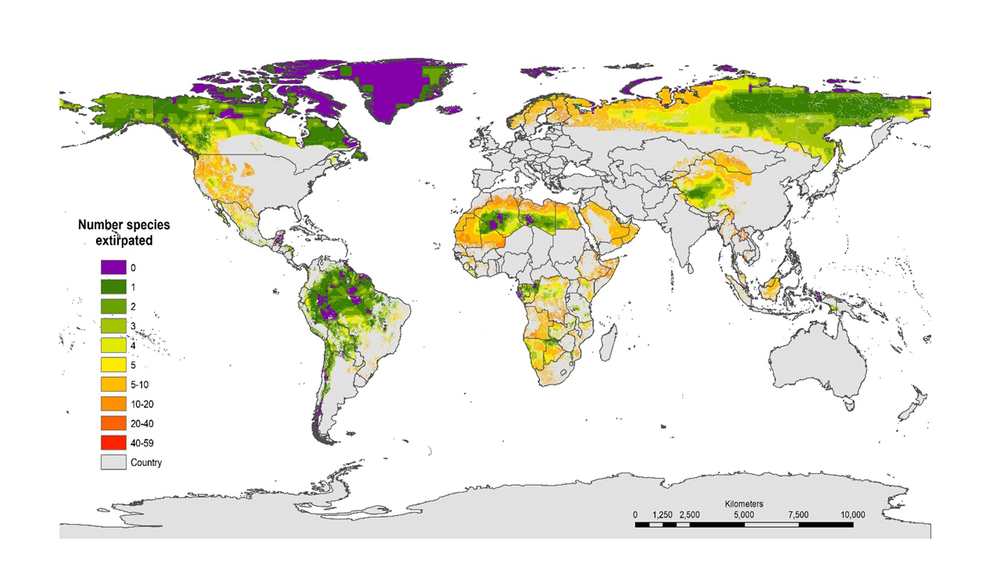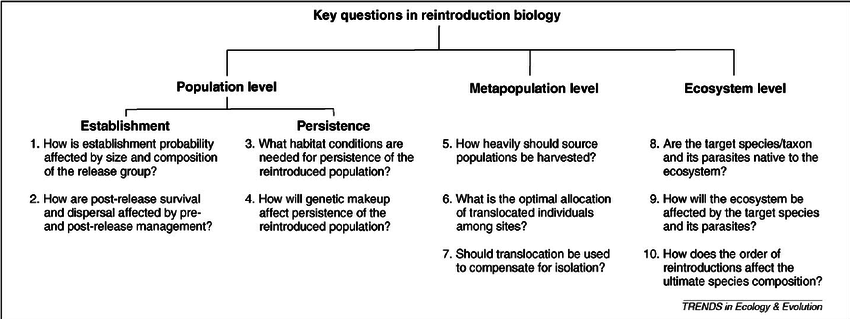According to Ernest Hemingway: “The Earth is a fine place and worth fighting for”.
And since the Human race has realized his own impact on Mother Nature, at least Scientists have endured to protect Earth’s Ecosystems and have sought to enshrine targets for preserving and expanding whatever remains of this serene and diverse wilderness.
Studies have always tried to map the intactness of these fragile Ecosystems to ascertain the degree of preservation they need.
Several past studies have indicated that between 20% and 40% of the Earth’s land surface can be considered ecologically intact.
But in a new study, many new parameters have been introduced while calculating the intact Ecosystems, like presence of same species after a period and their population gradient, their niche roles being performed successfully etc.
Findings: It was discovered that only 2.8% of the planet’s land surface could fit in and are scattered throughout the world.

These include the Nouabale-Ndoki National Park in the Congo, the Serengeti-Ngorongoro in Tanzania, the Alto Rio Negro indigenous territory in the Amazon forest, the Great Siberian Polynya in northern Russia and Kawésqar National Park in southern Chile.
These undoubtedly need conservation and protection yet only 11% of them fall within a protected area currently.
Introduction of invasive alien species including cats, foxes, rabbits, goats and camels impacted these areas’ biodiversity severely, denigrating their intactness.
The researchers suggested in the study to reintroduce a small number of important species to some damaged areas, such as elephants or wolves back into their original habitats, a move that could restore up to 20% of the world’s land to ecological intactness.
“We’re in the UN decade of ecosystem restoration now, but it is focusing on degraded habitat” says the lead author. “Let’s also think about restoring species so that we can try and build up these areas where we’ve got ecologically intact ecosystems.”

Whole study got published in journal Frontiers in Forests and Global Change. It has compared the maps of about 7000 species’ habitat ranges from the year 1500 and now(2021) using the IUCN Red List data.
Gross Findings:
Most of these Intact ecosystems have been found in areas managed by Indigenous communities.
Through targeted specie re-introductions in their original habitat, one can help sustain these Ecosystems and build resilience upto 20% but only in case of minimal Human interference and proper redressal of threats to the species’ survival.

An example to this scenario is the successful reintroduction of wolves into Yellowstone national park in the US, which transformed the ecosystem therein.
According to various Professors, in regards with the findings of the study:
“Accelerating climate change is becoming the overarching threat to the functionality of entire ecosystems. Yesterday’s mammal intactness hardly tells us a lot about the functioning ecosystems in the [global heating] age.”
“This study undervalues many efforts by ecosystem scientists to map and save ecologically intact places across the planet. It uses maps for species that are basically best guesses, meaning the message of where ecosystems are actually still pretty much intact is clearly minimized.”
Upon the age of 6th Mass Extinction, a coalition of more than 50 countries under The High Ambition Coalition (HAC) for Nature and People, including the UK and countries from six continents, has pledged to protect almost a third of the planet Ecosystems by 2030 and subsequently halt the destruction of the natural world.
Amidst the studies and Herculean efforts to heal our Earth, it is important that besides our inventive techniques, we may allow the Nature some time and space to be able to carry us into the future which may indeed become bleak for Humanity otherwise.
This may be accomplished by Human’s least intervention in serene Ecosystems, those may still be serving planet’s greater ecological needs.

